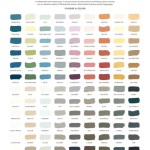Paint Colors For Living Room With Brown Leather Furniture
Selecting the optimal paint color for a living room featuring brown leather furniture requires careful consideration. Brown, as a neutral yet rich tone, serves as a versatile foundation upon which various color palettes can be built. The ideal paint color should complement the inherent warmth and sophistication of brown leather while also reflecting the desired ambiance of the space. Numerous factors contribute to this decision, including the specific shade of brown leather, the amount of natural light the room receives, and the overall design aesthetic being pursued.
The process of choosing a paint color goes beyond mere aesthetics. While visual appeal is paramount, the selected color can also influence perception of space, mood, and even the perceived value of the home. A poorly chosen paint color can clash with the furniture, creating a visually jarring experience, while a well-selected color can enhance the richness of the leather and create a cohesive and inviting atmosphere.
Several fundamental principles of color theory are relevant to this process. Understanding concepts such as complementary colors, analogous colors, and color temperature will greatly aid in narrowing down the selection. Moreover, considering the undertones present in the brown leather, as well as the existing architectural features of the room, is crucial for achieving a harmonious and balanced design.
Understanding the Undertones of Brown Leather
Brown leather, despite appearing to be a single, uniform color, often possesses subtle undertones that can significantly impact the choice of paint color. These undertones can range from warm (red, orange, yellow) to cool (blue, green, violet). Identifying the specific undertone of the leather is the first and arguably most important step in selecting a complementary paint color.
For example, brown leather with warm undertones, such as those leaning towards reddish-brown or golden-brown, pair exceptionally well with warm-toned paint colors. Colors like creamy off-whites, terracotta, warm grays (greige), or even muted shades of gold can enhance the inherent warmth of the leather, creating a cozy and inviting space. Conversely, pairing warm-toned leather with cool-toned paint colors can create an unwelcome clash and make the room feel unbalanced.
On the other hand, brown leather with cool undertones, those appearing more charcoal-brown or possessing a hint of green or blue, can be beautifully complemented by cooler paint colors. Consider shades of cool gray, blue-gray, muted greens, or even lavender. These colors will accentuate the coolness of the leather and create a sophisticated and calming atmosphere. Using warm colors alongside cool-toned leather might lead to a visually discordant result.
Determining the undertone can be challenging, especially under artificial lighting. It is recommended to examine the leather in natural daylight, comparing it to color swatches or paint chips. Holding the color swatches directly against the leather will allow for a more accurate assessment of the undertones present. In uncertain cases, consulting with a professional interior designer or paint specialist is advisable.
Exploring Complementary and Analogous Color Schemes
Once the undertones of the brown leather have been identified, exploring different color schemes becomes the next logical step. Color schemes are systematic approaches to combining colors in a visually appealing and harmonious manner. Two particularly relevant color schemes for a living room with brown leather furniture are complementary and analogous color schemes.
Complementary color schemes involve using colors that are opposite each other on the color wheel. This juxtaposition creates visual contrast and can add vibrancy to the room. For example, if the brown leather has warm undertones, its complementary color would be a shade of blue. While using a bright, saturated blue might be overwhelming, a muted or desaturated blue, such as a dusty blue or a teal, can create a sophisticated contrast that enhances the richness of the leather.
Similarly, if the brown leather has cool undertones, its complementary color would be a shade of orange. Again, instead of using a vibrant orange, consider using a muted version like a terracotta or a peach. These colors will add warmth and balance to the space without overpowering the cool tones of the leather. The key to successfully implementing a complementary color scheme is to use the complementary color in moderation, allowing the brown leather to remain the focal point.
Analogous color schemes, on the other hand, involve using colors that are adjacent to each other on the color wheel. This creates a more harmonious and subtle effect compared to complementary colors. For brown leather, analogous colors might include shades of beige, tan, gold, or even muted greens and yellows. This approach is particularly effective for creating a calming and cohesive atmosphere.
When using an analogous color scheme, it is important to vary the shades and tones of the colors to create visual interest. For example, pairing a light beige wall with a slightly darker tan accent wall and gold-toned accessories can add depth and dimension to the room. Avoid using too many similar colors, as this can result in a monotonous and uninspired design.
Considering the Impact of Natural Light and Room Size
The amount of natural light a living room receives significantly influences how paint colors appear. Rooms with ample natural light can handle bolder and darker colors without feeling cramped or oppressive. In contrast, rooms with limited natural light require lighter and brighter colors to maximize the available illumination and prevent the space from feeling dark and gloomy. The size of the room also plays a role in how paint colors are perceived; smaller rooms benefit from lighter colors to create an illusion of spaciousness.
For a living room with brown leather furniture and abundant natural light, consider using richer and more saturated colors. Deep greens, navy blues, or even charcoal grays can create a dramatic and sophisticated look. These darker colors will also serve to highlight the warmth and richness of the brown leather, creating a visually stunning contrast. However, it is vital to ensure that the room is adequately lit, even during the evening, to prevent it from feeling too dark.
In a living room with limited natural light, lighter and brighter colors are essential. Off-whites, creams, light grays, or pastel shades are excellent choices for maximizing the available light and creating a more open and airy feel. These colors will reflect light around the room, making it appear larger and more inviting. Avoid using dark or saturated colors in rooms with limited natural light as they can absorb light and make the space feel even smaller and darker.
The size of the room should also be taken into consideration. Smaller living rooms generally benefit from lighter colors, regardless of the amount of natural light. Light colors can create an illusion of spaciousness and prevent the room from feeling cramped. Larger living rooms, on the other hand, can handle darker or more saturated colors without feeling overwhelming. However, it is important to maintain a balance and avoid using too many dark colors, as this can make the room feel less inviting.
Furthermore, consider the existing architectural features of the room, such as the ceiling height and the size of the windows. Lower ceilings can benefit from lighter colors to create the illusion of height, while taller ceilings can handle darker colors without feeling oppressive. Larger windows will allow for more natural light to enter the room, allowing for a wider range of color choices.
In conclusion, successfully pairing paint colors with brown leather furniture involves understanding the undertones of the leather, exploring complementary and analogous color schemes, and considering the impact of natural light and room size. By carefully considering these factors, one can create a living room that is both visually appealing and harmonious, enhancing the beauty of the brown leather furniture and creating a welcoming and inviting space.

Living Room Paint Ideas With Brown Leather Furniture Couch Dark

What Colors Go With A Brown Leather Sofa According To Designers

Image Result For Paint Color To Match Brown Couch Living Room Decor

What Color Goes With A Brown Leather Sofa Studio34

Ideas For Wall Colors That Go With Brown Furniture The Inside

Ideas For Wall Colors That Go With Brown Furniture The Inside

Best Brown Couch Ideas For Your Living Room Farmhousehub

What Is The Best Wall Color For A Living Room With Brown Furniture

Adorable Dark Brown Living Room And Best 10 Sofa Decor Ideas On Home Design Couch

25 Beautiful Living Room Ideas For Your Manufactured Home Colors Brown Couch Design
Related Posts








